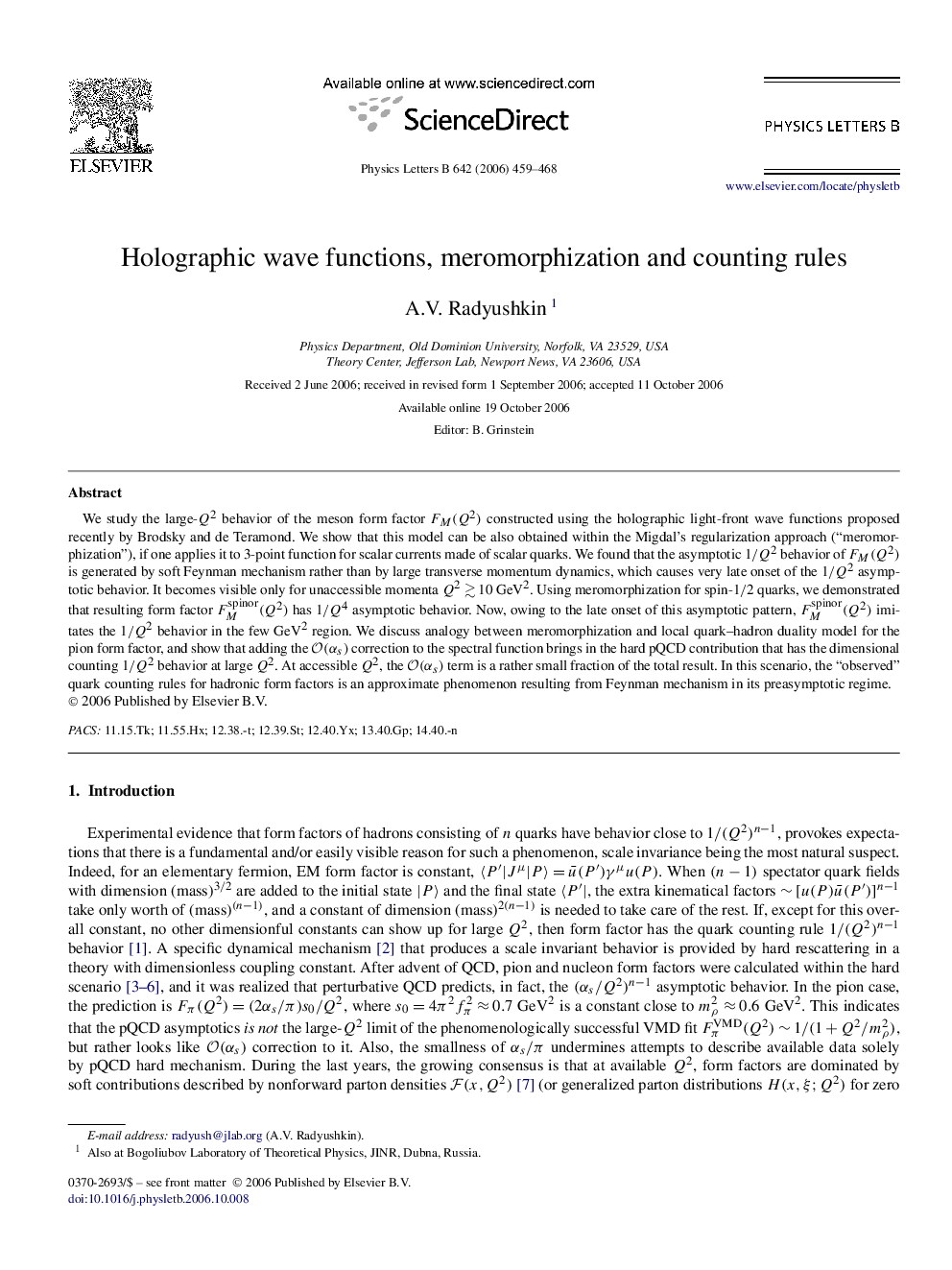| Article ID | Journal | Published Year | Pages | File Type |
|---|---|---|---|---|
| 8198037 | Physics Letters B | 2006 | 10 Pages |
Abstract
We study the large-Q2 behavior of the meson form factor FM(Q2) constructed using the holographic light-front wave functions proposed recently by Brodsky and de Teramond. We show that this model can be also obtained within the Migdal's regularization approach (“meromorphization”), if one applies it to 3-point function for scalar currents made of scalar quarks. We found that the asymptotic 1/Q2 behavior of FM(Q2) is generated by soft Feynman mechanism rather than by large transverse momentum dynamics, which causes very late onset of the 1/Q2 asymptotic behavior. It becomes visible only for unaccessible momenta Q2â³10GeV2. Using meromorphization for spin-1/2 quarks, we demonstrated that resulting form factor FMspinor(Q2) has 1/Q4 asymptotic behavior. Now, owing to the late onset of this asymptotic pattern, FMspinor(Q2) imitates the 1/Q2 behavior in the few GeV2 region. We discuss analogy between meromorphization and local quark-hadron duality model for the pion form factor, and show that adding the O(αs) correction to the spectral function brings in the hard pQCD contribution that has the dimensional counting 1/Q2 behavior at large Q2. At accessible Q2, the O(αs) term is a rather small fraction of the total result. In this scenario, the “observed” quark counting rules for hadronic form factors is an approximate phenomenon resulting from Feynman mechanism in its preasymptotic regime.
Related Topics
Physical Sciences and Engineering
Physics and Astronomy
Nuclear and High Energy Physics
Authors
A.V. Radyushkin,
